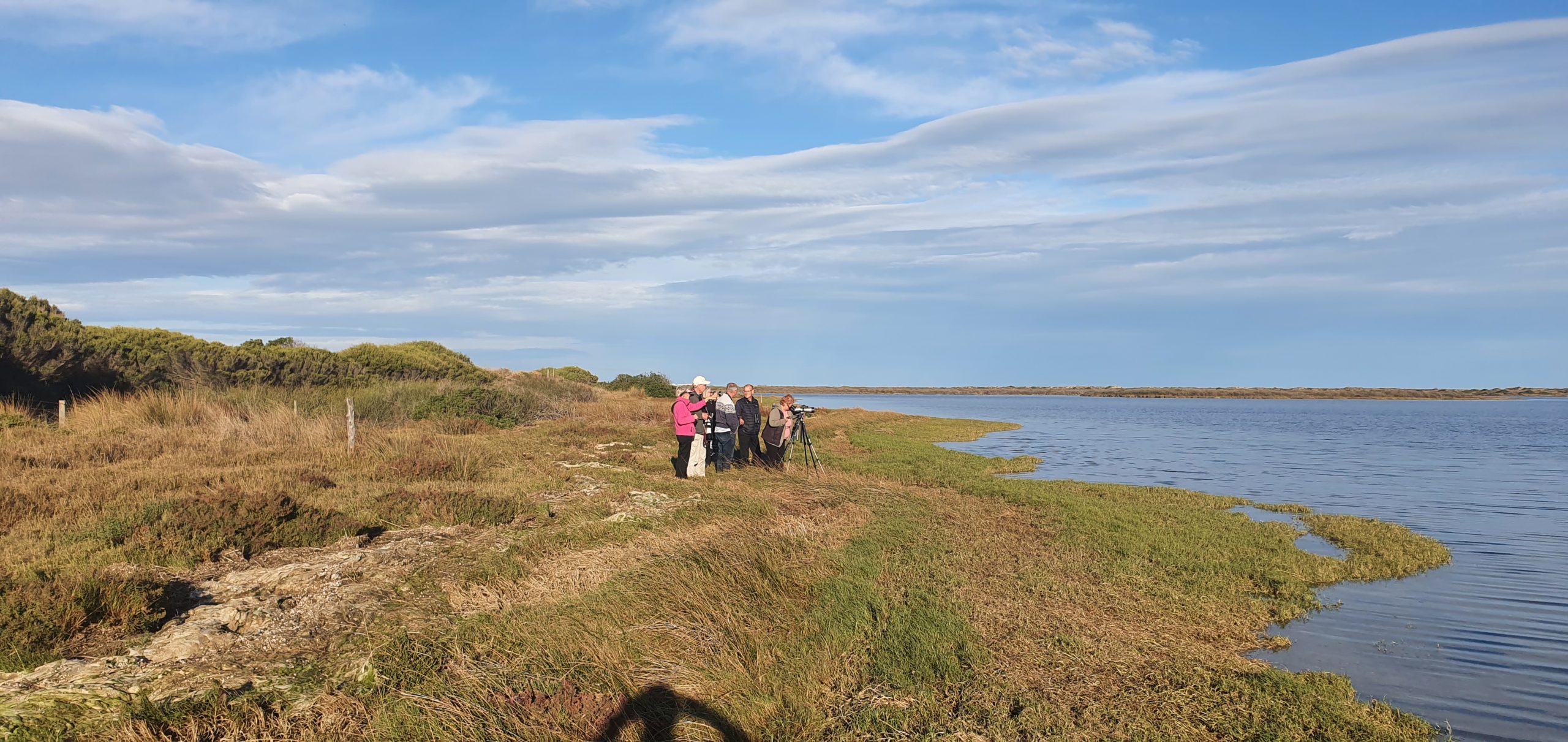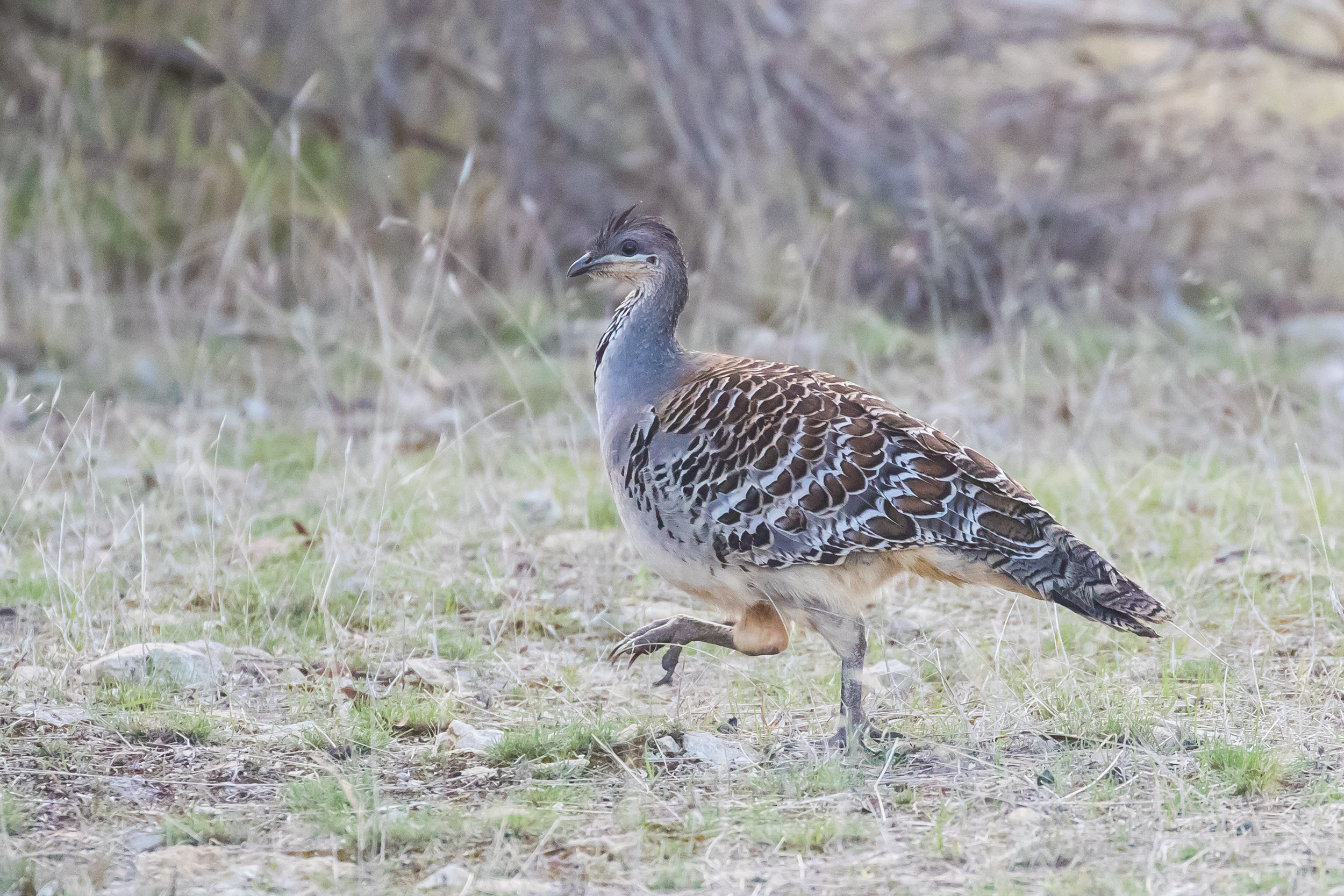Birding around the Fleurieu Peninsula, the Coorong and the Mallee
I’ve said a few times on this blog, and on Facebook, that for the first time this year I am “year listing” — keeping track of how many species I see in South Australia over the calendar year 2021. My friend Mike Potter is officially doing a “Big Year” in SA, trying actively to see as many species as possible, and gunning for the record of 375. Having got to 331 before halfway through the year, he is on track, but each new species gets harder and harder, so even if he cleans up on various outback trips he has planned, he still needs around 15 or so vagrants or otherwise unusual species to get the record.
I’m not doing a Big Year, but having started the year with a bang (see Jan 2021 and Convalescence), and having done a few trips with Mike to keep him company, I find myself on 276 on ebird for the year so far, second in the state so far, and way beyond my numbers for any previous year.

That lofty “status” may not last for long, though, with some keen young birders hot on my heels (I know you’re coming for me Jay, Andreas and Hannah :-)). But for me, it’s not about the competition so much as adding some new structure to my birding. When we first arrived in SA there were a lot of lifers available. As those targets fell one by one, I used photography as a way of keeping interest levels in patch-watching up — getting decent photos (never prize-winning images) of each species became a new target. This year, keeping the list is helping, and when I get some free time for birding, I have been structuring my day-trips around seeing new species for the year. Here’s a brief tale of a few of those trips over the last few weeks of late autumn and early winter.
Cox Scrub, 9th May
I first went to the amusingly named Cox Scrub in May 2013, unknowingly arriving a day after a “controlled burn” had escaped and obliterated 90% of the park. Ashes were still smouldering, and a stench of smoke hung in the air. Needless to say, I didn’t see much that day, and have barely visited since, except as a brief stop on the way home from birding around Goolwa or Hindmarsh Island. On 9th May I finally managed a “proper” visit, some 8 years later, and the park has recovered some of its former glory as one of the final remaining patches of stringy-bark and banksia scrub, habitat that before European settlement once covered much of the Fleurieu Peninsula.



A spot now universally known as “The Puddle” where lots of people have obtained some cracking photos was pretty quiet, but I’d rather be walking and birding than sitting around for a photo anyway. So a walk around the Emu Wren Hike was called for. It was quite birdy and delivered a lot of the park’s specialties, a couple of which were new for the year (Fan-tailed Cuckoo, Beautiful Firetail). Chestnut-rumped Heathwren of the endangered parkeri race is a local specialty; amazingly it was able to cling on in the small unburnt fragment 8 years ago, and has now re-colonised the scrub where regen is providing good dense habitat.





St Kilda, 16th May
A pretty short trip, just a couple of hours late one Sunday afternoon. This time last year we had just been “released” from our covid lockdown in SA, and I wanted a decent photo of Banded Stilt to add to my blog about all the waders I’ve seen around the world (Part 1 of 6 is here). That day (10th May 2020) I also found several Black-tailed Godwits a rare but regular visitor to SA. I like to think I would have checked it out this year anyway because of my find from a year previous, but actually today this was a fairly shameless twitch, because I’d seen a report on ebird days earlier. This was a chance to keep the year list ticking over and pick up a bird that might not be a gimme later in the year. Sure enough, I found at least 2 Black-tailed Godwit consorting with 5-6 Bar-tailed cousins, as well as several hundred Banded Stilts, which had been absent from the beach for most of the summer. I didn’t manage a pic of the Blackwits but did videoscope the Banded Stilts with my new phone-scoping contraption (see here for more info)
Port MacDonnell, 22nd May
Two weekends later I grabbed a lift with Mike Potter for the May pelagic from Port MacDonnell. I’d originally assumed we’d make our way down via the Coorong and pick up a few new birds that way, but word came through from Bob Green that a bird we’d thought would be long gone was still hanging around — so we headed straight to the very far SE of the state to Piccannie Ponds to twitch a female Pink Robin for a state tick for both of us. Unfortunately it was too dark, and the bird too flighty for any photos, but our views were good enough with bins to see the buff (not white) wing bars that distinguish it from its close relatives like Flame Robin.


The following day we had a solid, but not spectacular day out on the water. We didn’t see any of the megas I had hoped for but because this was only my second trip into the big blue paddock for year, some common birds were “new”: Fluttering Shearwater, Wandering Albatross (*), Campbell Albatross (*), Southern Royal Albatross (*), Fairy Prion, Cape Petrel, Northern Giant Petrel and Salvin’s Albatross. Note that none of the *-ed birds shows as a full species on ebird, but are split by IOC.






Hindmarsh Island, 30th May
Less than a week had passed after returning from the pelagic, when at 1.30 on 29th May the group-chat #teammike2021 went off! Bob Green (that man again) had found an Orange-bellied Parrot on Bird Island adjacent to Hindmarsh Island about 90 minutes from Adelaide. Mike, who was up at Gluepot when the news broke couldn’t get there on the Saturday, but arranged to pick me up on his way through early the next morning. We met Bob at the Murray Mouth Lookout carpark and trudged our way over to Bird Island. It was a very cold but pleasant morning, but in the end we saw no OBP. At the time of writing the bird is known still to be around, but spends most of its time on inaccessible private land on nearby Mundoo Island, coming over to Bird Island only occasionally. Anyway, I did get Eurasian Skylark and Brown Songlark new for the year, and though Rock Parrot was not new for the year, it is uncommon so also a nice one to see.
Hindmarsh Island, 1st June
The following day (Monday) I was not feeling too crash hot. By the time I got home from work I had a sore throat, so Nikki (who was also feeling unwell) and I decided to go for a covid test. Tuesday morning I was feeling a bit better, so maybe I just needed some rest, but I was working from home while waiting for my test result. That came through at about 11.30, and as expected was negative. But then a hour later my phone rang; it was Mike: “Northern Shoveler on Hindmarsh Island. Are you at home or work? I’m on my way past your place in about 15 minutes.” I looked at my diary. It seemed surprisingly clear. I asked Nikki if she’d mind me going birding. She was (unusually) positively encouraging. It was as if the fates had aligned. I grabbed my gear and was ready when Mike called by not long after. He was still in work clothes and had a pair of bins in the car, but no scope. Perhaps it was my optics rather than my company he was most interested in… ;-).
It was an interminable trip, slowed by lots of Sunday drivers and a super-slow tractor past Mt Barker, but we arrived with Deb Hopton still there keeping vigil. We hoped she kept it tethered to the spot. As we rolled in, Mike in his eagerness barely stopped the car before he was jumping out. Deb’s first words, though, were the ones no birder ever wants to hear: “It was here ’til a minute ago, then it flew…”. There’s some sad, frustrated and perhaps even profane elements to the next 30 mins, but to spare you all that I’ll cut to the happy ending: Mike and I had wandered along the bank in opposite directions when finally, after carefully and repeatedly but apparently fruitlessly picking through a few large, distant, mixed flocks of ducks and terns, a Northern Shoveler magically appeared from behind a couple of big Caspian Terns into the middle of my scope. I tried to phone him, now about 400m away, but realised that his phone was in the car, left there in his eagerness to nail the tick as quickly as possible. A few others had also gathered a few hundred metres away in what passes for a large twitch in SA. If I could do that whistley thing with 2 fingers, this would have been the perfect opportunity. But I can’t. Shouting profanities at the top of my voice is something I can do (like when I was trying to alert Paul Coddington to a Sandstone Shrike-thrush) and that tactic might have worked but I was mindful we were in company, so I decided to keep it clean and old school: “Cooo-eeee!!” had a really pleasing carry and echo across the channel, and had the desired effect. Mike duly arrived, picking his way through the grass and mud in his work brogues, followed shortly afterwards by the rest of the “crowd” whom he’d left in his wake. Mike and I justifiably celebrated with a beverage at the Victoria in Strathalbyn on the way home, and I remarked that we had spent more time in each other’s company in the last 11 days than with our respective (very tolerant) wives.

Hindmarsh Island hat-trick, 6th June
Five days later on 6th June I was back on Hindmarsh Island renewing the search for the elusive Orange-bellied Parrot. This time I met up with Craig Greer and Chris Steeles. But before I met them there I wanted to make a detour to look for another potential year tick, Cattle Egret, at a regular spot not far from Tolderol. I called in at Monarto Conservation Park, a lovely compact stand of mallee and wildflowers that is just about the closest patch to Adelaide for four mallee specialties, which I managed to add in less than a 20 minute stop: Purple-gaped Honeyeater, Tawny-crowned Honeyeater, Southern Scrub-robin and Shy Heathwren.
At my Cattle Egret site Mulgundawa near Lake Alexandrina, there were no egrets, but more than 200 Cape Barren Geese, before I finally rocked up to Bird Island to rendezvous with Chris and Craig an hour behind schedule. Once again we dipped on OBPs, but some Brown Quail that flushed from under my feet on the saltmarsh were new for the year. Several summer-plumaged Double-banded Plover scuttled about with winter stints on the sandbars, and I managed a photo of Brown Songlark, quite probably the same bird as I’d ticked off for the year a week ago.
I bade farewell to the chaps at Goolwa Bakery and checked out Basham’s Beach for whales (I dipped). The Inman Valley in Victor Harbor turned up a new bird for the year, Black-chinned Honeyeater, rare and rather localised in SA. And a Wedge-tailed Eagle just out of Victor was also (amazingly) new for the year. I had a bit more birding for the day left though, and called in at the Onkaparinga River estuary where Paul Coddington had seen a Reef Egret a few weeks previously. From the cliffs above the river mouth I noted a Peregrine soaring (also new for the year), and down by the footbridge an Eastern Reef Egret — which was not just a year tick, but also a SA tick for me — was fishing near the bank, just as it had been for Paul back in May.








The Coorong, 13th June
My reward for a day doing chores around the house on 12th June was a chance to get out again on Sunday. I decided to head further afield to the Coorong today for some winter specialties, and to check out a new mallee spot. Flame Robin is a winter visitor to the south east of the state and Salt Creek Rd is just about the closest regular spot to Adelaide. Today there were 6 in a rough paddock just inside the northern boundary of Martin Washpool Conservation Park. Beautiful Firetail and Horsfield’s Bronze-cuckoo were nice additions to the day list, but not new for the year. At Salt Creek itself I tracked down a Rufous Bristlebird for a fairly typical, furtive encounter, and a tip-off from Adelaide Uni postdoc Jay Iwasaki (who is hot on my heels on 250 for the year) led me to a nice spot of mallee near Coonalpyn where as well as an unprecedented abundance of Mallee Ringneck (dozens in a pretty drive through the woodland) three Malleefowl were feeding in a stubble field near the bush. On the way home I noted Greater Bluebonnet in roadside trees for another year tick, albeit one that I fully expected to get along the way without a special effort.







The next day was a public holiday, the last til October. Though I thought about staying home, the chance to have another clear day birding was too good an opportunity to pass up, so I committed to another slightly longer day trip. It wasn’t until I got up the next morning that I finally made my mind up to head to the mallee in the east of the state, Billiat Conservation Park. I’d considered yet another drive down to Hindmarsh Island, and since an OBP was seen Monday morning, in retrospect perhaps I made the wrong call. I still had a good day though, and picked up two new birds for the year. First, as I drove at speed along the B55 I spotted an Emu, a species that had somehow evaded me for almost an entire half-year. At 110 km/h, quite literally my fastest tick! As I approached Billiat I spied a Major-Mitchell’s Cockatoo in a roadside tree. Always keen for an encounter with a big pink and white cockatoo, I pulled over for pics; not new for the year since I had seen some in Gluepot back in Jan, but still a cracker (and only my second ever SA record).
Billiat itself continues to recover from the fire that ravaged most of the park back in 2014. A few of the birds were hanging around in small winter flocks, with birds such as Weebill, Spotted Pardalote, White-eared Honeyeater, Shy Heathwren and Purple-gaped Honeyeater chasing each other around. The star of the show, and the main reason for coming here, was to look for Striated Grasswren. These little buggers gave me the run-around, darting mouse-like between clumps of spinifex giving barely tickable views, let alone photo opportunities.


So on ebird, Striated Grasswren is number 276 for my year list. If you include the IOC official splits — Campbell Albatross, Wandering Albatross, Southern Royal Albatross, Australian (Gull-billed) Tern, Western Whistler and Spotted Scrubwren — I’m on 282. Not far to 300!

